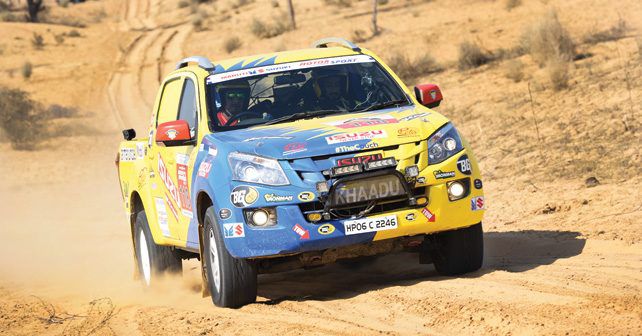
Vinayak insists that real competition fuels fan interest, and isn’t just better for the participants but for motorsport as a whole.
I recall the optimism that I felt for cross-country rallying in India back in 2012, when I was headed to cover the Desert Storm for the very first time. Mahindra had announced a factory effort, with its successful XUV 500 and with top-drawer talent like Gaurav Gill, Lohitt Urs and Sunny Sidhu behind the wheel. The two were also taking part in the Indian National Rally Championship in their ‘Cheetah inspired’ vehicle.
This was also well before there were any doubts about the future of the Indian Grand Prix. The completion of the inaugural edition acted as a catalyst for various sections of the Indian motorsport spectrum to use it as a marketing tool for their respective disciplines. I know, you’re probably thinking to yourself, what would cross-country rallying and the INRC have to do with F1. But if you had talked to drivers and riders, and seen the press releases coming out at the time, you wouldn’t have had to wait very long for F1 to be mentioned. Not to mention the fact that many of the marshals during the Indian GP were well known Indian motorsport figures themselves.
But I digress. To get back to the point, there was a general feeling of optimism of being able to shape the domestic racing series and championships in a professional enough manner to warrant it getting a strong following and press coverage – with motorsport now being firmly in the mind’s eye of the general public.
Seeing two big Indian car manufacturers fight it out at the 2012 Desert Storm was not only exciting for me as a fan, but it also prodded Maruti enough to provide star driver Suresh Rana with a Grand Vitara to take on the rapidly improving XUV. But they never really went all the way. Despite Rana repeatedly asking Maruti to field a car in the INRC, he never got his wish.
This led to no development on a car that was already well past its marketability. Instead, cars from the current product range were fielded only in the far tamer Time Speed Distance category.
So it really came as no surprise when, in the 2014 Desert Storm, Rana’s Grand Vitara retired with mechanical issues and Sunny Siddhu gave the XUV500 a momentous win. It should have been a catalyst for more manufacturers to enter, but Maruti forced a change in the maximum engine capacity for the Dakshin Dare – making Mahindra ineligible to take part with their winning car.
Word is that Anand Mahindra himself sent out a memo to Mahindra Adventure (which handles motorsport) to not even bother going for any future events where another manufacturer was the title sponsor. It didn’t help matters much that Polaris faced its fair share of grief when it scored a 1-2 finish in the Raid de Himalaya. Just six days prior to this year’s Desert Storm, Polaris decided to not compete. It’s believed that the reason was that their vehicles were not allowed to be part of the general classification.
At this year’s Desert Storm, the Isuzu D-Max V-Cross took third place. One hopes that, on this occasion, competition will be encouraged – because, if it is, cross-country rallying and motorsport in general will benefit a great deal from a genuine sporting rivalry.























Write your Comment